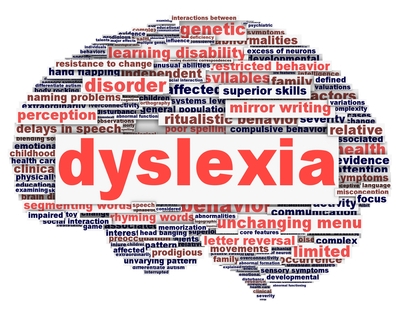

They grow frustrated and disappointed. Teachers wonder what they or the child might be doing wrong, often misdiagnosing the problem or getting bad advice. Parents question themselves, feeling alternately guilty and angry.
According to author Sally Shaywitz, dyslexia affects one out of every five children ― ten million in America alone. In every neighbourhood and in every classroom worldwide there are children struggling to read. For many affected children dyslexia has extinguished the joys of childhood.
Find the cause to find a cure
Most problems can only be solved if one knows what causes the problem. A disease such as scurvy claimed the lives of thousands of seamen during long sea voyages. The disease was cured fairly quickly once the cause was discovered, viz. a Vitamin C deficiency. A viable point of departure would therefore be to ask the question, “What is the cause of dyslexia?”
To understand what causes dyslexia we need to focus on two basic characteristics, says Susan du Plessis, Director of Educational Programmes at Edublox:
• Reading is not a natural or instinctive process. It is acquired and must be taught.
• Learning is a stratified process, in which one skill has to be acquired first, before it becomes possible to acquire subsequent skills. It is like climbing a ladder. If you miss one of the rungs, you fall off.
Language is the first rung
Di dunia kini kita, tiap orang harus dapat membaca… Unless one has first learnt to speak Bahasa Indonesian, there is no way that one would be able to read the above Indonesian sentence. This shows that language is at the very bottom of the reading ladder. Its role in reading can be compared to the role of running in the game of soccer. One cannot play soccer if one cannot run. One cannot read a language unless one knows the particular language well.
Evidence that links reading problems and language problems has been extensively presented in the literature. Research has, for example, shown that about 60 percent of dyslexics were late talkers. In order to prevent later reading problems, parents must therefore ensure that a child is exposed to sufficient opportunities to learn language.
The second rung
The game of soccer consists of many fragmented elements or skills ― passing, shooting, heading, etc. Before any child is expected to play in a full-game situation, he should first be trained to pass, shoot and head the ball. It is the same with reading. Cognitive skills, such as visual processing, auditory processing and auditory memory form the foundation of reading, and must be taught first.
Visual processing is one of the important cognitive skills and refers to the ability to make sense of information taken in through the eyes. Visual processing skills include the ability to discriminate between foreground and background, colour, shapes, sizes and position in space. Last-mentioned refers to the ability to accurately perceive objects in space with reference to other objects. A person with a spatial problem may find it difficult to distinguish letters like b and d, as well as n and u.
Auditory processing skills include auditory discrimination, which refers to the ability to hear similarities and differences between sounds. The child who has a problem in this area is unable to identify gross differences, for example between a siren and a school bell, or phonemic difference as between the words /pen/ and /pin/ or /big/ and /pig/.
Also referred to as auditory analysis and synthesis, auditory blending is the ability to synthesise individual sounds which form a word. The child who manifests a difficulty in this area is unable to blend the individual sounds in a word, such as /c-a-t/. The child may know the individual phonemes but simply cannot put them together. Similarly, the child may have problems breaking apart an unknown word by syllables and blending it, such as /te-le-phone/.
Auditory memory important for phonics
According to neurodevelopmentalist Cyndi Ringoen, a poor auditory short-term memory is often the cause for a child’s inability to learn to read using the phonics method. Phonics is an auditory learning system, and it is imperative to have a sufficient auditory short-term memory in order to learn, utilise and understand reading using the phonics method.
According to Ringoen, in order to begin to utilise phonics beyond memorising a few individual sounds, a child must have an auditory digit span close to six. Digit span is a common measure of short-term memory, i.e. the number of digits a person can absorb and recall in correct serial order after hearing them or seeing them.
To test the auditory digit span of your child, say numbers slowly in one second intervals, in a monotone voice. Say, for example, 6-1-5-8 and have your child repeat it back. If he can, then say 9-2-4-7-5. Your child must be able to say a four digit sequence back correctly 75% of the time on the first try to be considered at a short-term memory of four, and it is the same for each higher digit.
The solution to dyslexia is thus to first address the cognitive skills that are foundational to reading.
Edublox offers multisensory cognitive programmes, aimed at developing and automatising the foundational skills of reading and spelling, as well as application in the form of reading, spelling, and comprehension exercises.






Leave a Reply